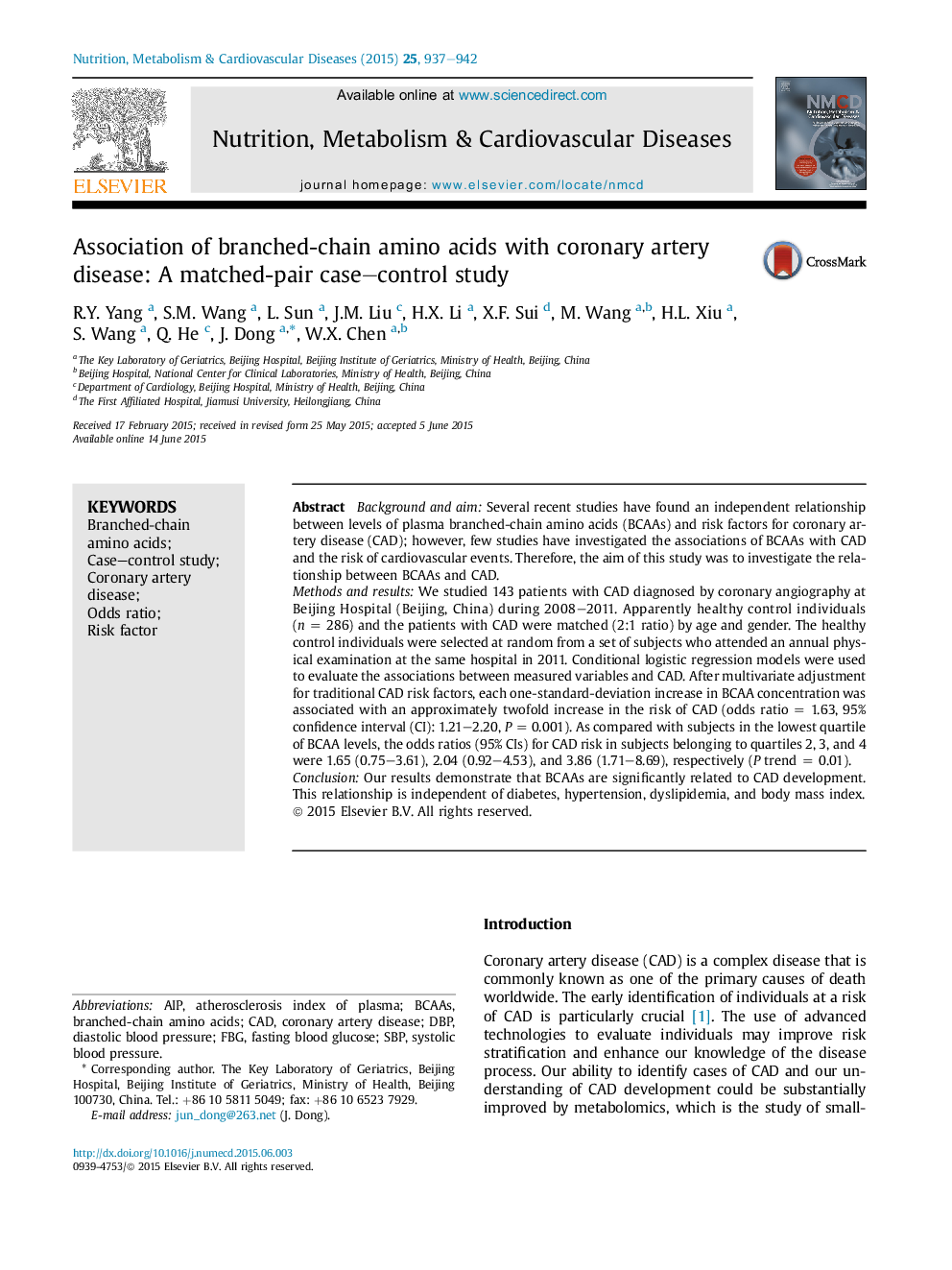| کد مقاله | کد نشریه | سال انتشار | مقاله انگلیسی | نسخه تمام متن |
|---|---|---|---|---|
| 5996567 | 1180680 | 2015 | 6 صفحه PDF | دانلود رایگان |
- We conducted a matched-pair case-control study in Chinese people.
- Association of branched-chain amino acids with coronary artery disease is proved.
- Association remains significant after adjusting for traditional risk factors.
- Association was exhibited in a more general population than in the previous study.
- These mechanisms are independent of insulin resistance and diabetes.
Background and aimSeveral recent studies have found an independent relationship between levels of plasma branched-chain amino acids (BCAAs) and risk factors for coronary artery disease (CAD); however, few studies have investigated the associations of BCAAs with CAD and the risk of cardiovascular events. Therefore, the aim of this study was to investigate the relationship between BCAAs and CAD.Methods and resultsWe studied 143 patients with CAD diagnosed by coronary angiography at Beijing Hospital (Beijing, China) during 2008-2011. Apparently healthy control individuals (n = 286) and the patients with CAD were matched (2:1 ratio) by age and gender. The healthy control individuals were selected at random from a set of subjects who attended an annual physical examination at the same hospital in 2011. Conditional logistic regression models were used to evaluate the associations between measured variables and CAD. After multivariate adjustment for traditional CAD risk factors, each one-standard-deviation increase in BCAA concentration was associated with an approximately twofold increase in the risk of CAD (odds ratio = 1.63, 95% confidence interval (CI): 1.21-2.20, P = 0.001). As compared with subjects in the lowest quartile of BCAA levels, the odds ratios (95% CIs) for CAD risk in subjects belonging to quartiles 2, 3, and 4 were 1.65 (0.75-3.61), 2.04 (0.92-4.53), and 3.86 (1.71-8.69), respectively (P trend = 0.01).ConclusionOur results demonstrate that BCAAs are significantly related to CAD development. This relationship is independent of diabetes, hypertension, dyslipidemia, and body mass index.
Journal: Nutrition, Metabolism and Cardiovascular Diseases - Volume 25, Issue 10, October 2015, Pages 937-942
